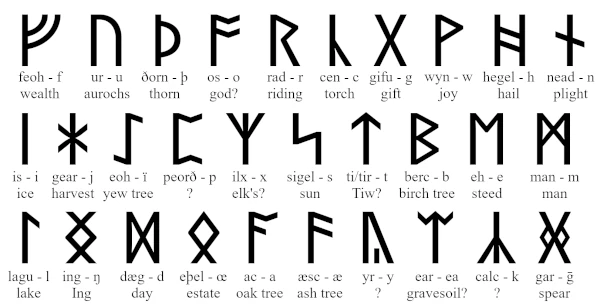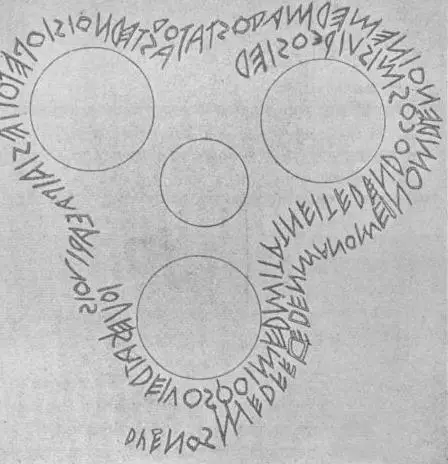The English alphabet has a long history. Beginning with the Phoenician alphabet thousands of years ago in the 12th/13th century BCE, our alphabet was passed down through various cultures and civilizations ranging from the Greeks to the Romans until finally settling into English. Throughout its journey through the ages, letters changed forms many times. We even gained new letters and lost old ones. Given all this change, it may lead you to ask, “what was the last letter added to the English alphabet?”
“J” was the most recent addition to the English alphabet in 1524. Originally, “I” and “J” were considered the same letter (although the sounds were different). It wasn’t until an Italian grammarian, Gian Giogio Trissino, argued for their separation that they became distinct.
English’s First Alphabet
It may surprise you to find out, but the alphabet we all know and love today is actually English’s second alphabet. It’s true! During the Old English period (roughly 600AD – 1066AD), English was written in a runic alphabet. This was an old system of writing native to Germanic languages at the time. Languages spoken in the areas of Germany, Norway, Sweden, Denmark, and the United Kingdom all used runic alphabets in the 7th century.

The runic alphabet used in Old English is known as ᚠᚢᚦᚩᚱᚳ (futhorc). The name comes from the sound values of the first six runes: ᚠ (/f/), ᚢ (/u/), ᚦ (/θ/), ᚩ (/o/), ᚱ (/r/), ᚳ (/k/). The following image shows all the runes in Old English’s runic alphabet. (If you want to know more about the letters between the slashes in the brackets above (IPA symbols), check out my article “How to Sound like a Native English Speaker.”)

From the earliest known examples of English writing (from around 600AD) until the runic alphabet was gradually replaced by the Latin alphabet (around 800AD), these runes were used to write English literature and inscriptions.
The History of Our Modern Alphabet
But how did we go from using the runic alphabet to the Latin one? What would make people give up their ancestral form of writing for a completely new system? That is an interesting story itself and to understand it we need to take a look at the history of the Latin alphabet.
Phoenician Alphabet
The journey of the writing system that would eventually become the modern English alphabet begins sometime around the 13th or 12th centuries. During this time, a group of people known as the Phoenicians had a vast empire and trade network. As their empire grew and expanded, they brought their alphabet along with them.

The image above is an example of the Phoenician alphabet. This alphabet, through prolonged contact, was transmitted to the Greek civilization. Once adopted, the Phoenician alphabet eventually developed into the ancient and then modern Greek alphabets. At the time, the Greek civilization had many colonies throughout the Mediterranean sea. One of these colonies, Magna Graecia, was located on the Italian peninsula.
Before the glory days of the Roman empire, the Italian peninsula was a crowded place. On the south side was Magna Graecia, this area was populated by many Greek settlers. The western half of the peninsula was occupied by a grand civilization known as the Etruscans. Through prolonged contact, the Etruscans adopted the Greek alphabet from the settlers of Magna Graecia. This was the next step in the chain for the journey of our current alphabet.
Roman Alphabet
The Etruscan people had a deep impact on Roman culture and society. Some of the Etruscans were even said to have been kings of Rome! Given this close social contact, it was inevitable that the Romans would adopt the Etruscan alphabet. This happened as early as 600BCE.

At this point, the Latin alphabet was composed of these 21 letters.
| A | B | C | D | E | F | G | H | I | K | L | M | N | O | P | Q | R | S | T | V | X |
You’ll notice that this falls short of our current 26 letters. Notably, the letters “J”, “U”, “W”, “Y”, and “Z” are missing. These letters were all added at a later date and, as this article will show you, the letter “J” was added last during the 16th century AD.
The Transition to English
So how did this alphabet come to replace the native Old English runic alphabet? The story is steeped in history.
The Anglo-Saxons (the first speakers of English) had a burgeoning culture and society on the British isles for over 400 years. During this time, they used the runic alphabet to inscribe small phrases and poems onto furniture and weapons (see the Frank’s casket above). There was not a large percentage of the population who was literate, however.
Most information was passed down orally. Reading and writing was something that only a handful of wealthy people could do. This began to change sometime in the 6th century AD. During this time, Christian missionaries came to Britain from Ireland. Along with the Christian religion, they once again brought Latin to the British isles. As Christianity spread throughout the population, so too did the Latin language.
For a time, Latin and Old English existed together. However, during the 9th century. The king, Alfred the Great, was upset at the state of education in his realm, so he decided to advocate for literacy and education among his subjects. He chose to do this in English rather than Latin. He got the scribes, all of who were literate in Latin thanks to being members of the church, to translate and transcribe literature into English. Many works of English literature were produced during this period. The alphabet they used was a mixture between Latin and Old English runes. The English sounds that weren’t in Latin were represented by runes.
| a | æ | b | c | d | ð | e | f | ᵹ/g | h | i | l | m | n | o | p | r | s | t | þ | u | ƿ | x | y |
The above is the Old English Latin alphabet used during the 9th century (You may notice þ [thorn] among them. I wrote a whole article on this letter and its history. If you’re interested, you can check that out here). As mentioned above, this alphabet arose due to the bilingual status of the scribes at the time. Most of their scripture work was done in Latin, so when it came time to write English literature, they used the writing system they knew best.
The Emergence of J
You’ll notice that, even by this time, the letter “J” is absent from the English alphabet. Despite the sound represented by “J” being present in English at the time, there was no distinct letter yet for this sound. Instead, the letter “I” stood for both sounds now represented by “I” and “J”.
Before it was its own letter, “J” was used as a fancier way to write the letter “I”. The small swoosh on the tail of the “I” was known as a swash. It was used in Roman numerals to terminate a series of ones (“XXIIJ” and “xxiij” were both 23 instead of “XXIII” or “xxiii”). In the Latin language, “I” is used to represent both the vowel sound /i/ (like the vowel sound in “eat”) and the consonant sound /j/ (like the first sound in “year”).
This continued for a long time until 1524 when an Italian grammarian named Gian Giorgio Trissino wrote an essay titled “Ɛpistola del Trissino de le lettere nuωvamente aggiunte ne la lingua italian” (The Letter of Trissino about the new letters recently added into the Italian language). In this essay, he argued for the separation of the two sounds represented by “I” into two distinct sounds. One sound (/i/) would remain represented by “I”, while the other (/j/) would be represented by “J”.
As this novel use for the letter “J” began to gain recognition and spread across the languages of Europe (helped in part by the printing press), the sounds represented by “J” shifted depending on the needs of the adopting language. Thus, “J” retains the /j/ sound in German (in words such as “jung” /jʊŋ/ (young) or “jetzt” /jɛtst/ (now). However, in English the sound has become /dʒ/ like in the word “judge” or “jump”.
Conclusion
And so, the letter “J” has been with us ever since. If your name starts with the letter “J”, you have Gian Trissino to thank for liberating “J” from “I” and giving this new letter to the world’s languages.
From a simple flourish added to the end of “I”, over the centuries the letter “J” grew into a letter all its own. Now it’s an indispensable letter we use for both vocabulary and people’s names. “J” may have been our last addition to the alphabet, but it certainly isn’t a slouch!



